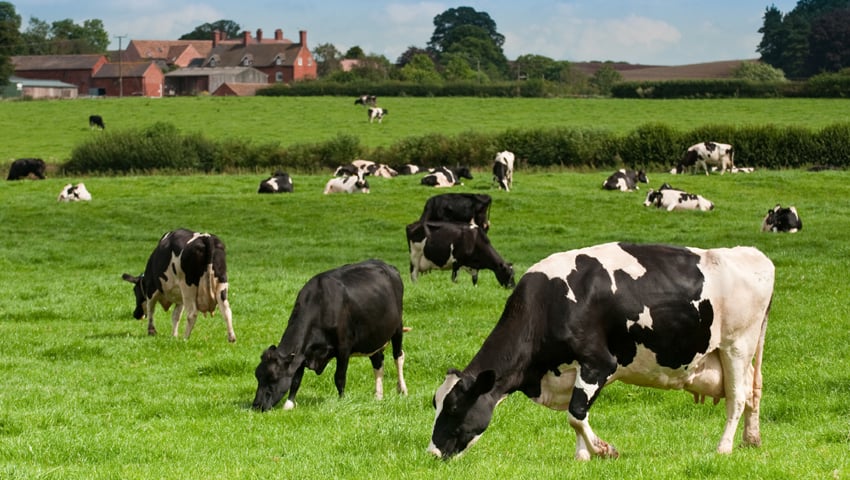Danish dairy co-operative, Arla, has reacted to plans by the Government of Denmark to introduce a cow tax, saying, “It is crucial for us that farmers who genuinely do everything they can to reduce their emissions are not subjected to a tax now or in the future.”
A statement by Peder Tuborgh, CEO of Arla Foods, recognised the need to meet climate goals, but said that a cow tax was not the answer. Voluntary measures and own-initiatives are already driving down emissions in dairy, he said.
After five months of negotiations, agreement on the CO2e tax was reached last week between the Government of Denmark, the Danish Agriculture and Food Council, the Danish Society for Nature Conservation, the Confederation of Danish Industry, the Trade Union NNF that organises workers within the Danish slaughterhouse and meat industry and the Danish Local Government Association.
The agreement means that Danish dairy farmers will face an annual tax per cow as the Government of Denmark introduces Europe’s first carbon tax on agriculture. From 2030 farmers will have to pay 120 Danish krone (~£34) per ton of CO2e, increasing to DKK 750 (~£85) per tonnes of CO2e in 2035 – although a tax break of 60 per cent will be applied to ‘climate-efficient’ farmers. After the deduction, the effective cost will be 120 DKK (£14) per ton of CO2 e in 2030, and 300 DKK (£34) in 2035.
While it’s possible that a tax on ‘net’ emissions – accounting for both emissions and drawdown – could be used to drive good practice, the Danish CO2e tax penalises best practice, for example where cows are kept in regenerative systems to deliver adaptation, nature restoration and nutrient dense food.
Arla statement
The Arla statement by Peder Tuborgh reads, “Throughout the process, we have said that Arla, Arla’s farmers, and the Danish people fundamentally want the same thing: To have high-quality Danish food with a low climate footprint. We are convinced that we can achieve our climate goals through voluntary measures. We have a clear plan for this, and we are delivering on it. Over the past 2 years, we have reduced nearly 1 million tons of CO2e across the entire Arla Foods—through our own initiatives and with the help of data, advice, and financial incentives. Depending on the exact calculation, this is a significant portion of the shortfall that the entire Danish agriculture sector needs to deliver by 2030. In Denmark alone, we have reduced by 0.21 million tons over the past two years.
“It is positive that there is now a broadly anchored agreement that allows us to look forward. We can see clear fingerprints from Agriculture & Food in the agreement, and they have done a great job landing an agreement together with the government and, among others, the Danish Society for Nature Conservation.
“Our farmers are already engaged in the green transition. Arla has created a financial sustainability supplement model to support our farmers in reducing their farm’s climate footprint. In short: The more climate and sustainability measures an Arla farmer implements, the more they are paid for their milk. Every single year, we conduct climate checks on all farms, a model that has now spread to the rest of the dairy sector.
“It is crucial for us that farmers who genuinely do everything they can to reduce their emissions are not subjected to a tax now or in the future. Therefore, it is essential that the tax base for a CO2 tax is solely based on emissions for which there are means to eliminate. If there is to be any incentive for making a green transition, one should not be economically penalized if they take the right measures on the farm. We are aware that, as the agreement stands now, it may have some consequences for, among others, our organic farmers, who currently do not have the same means available. This needs to be examined further.
“The Green Tripartite Agreement recommends carrying out the largest redistribution of land in Danish history, including setting aside 250,000 hectares for new forests and 140,000 hectares of low-lying lands. It is positive that the location of the withdrawn land is determined locally, and that the selection focuses on multifunctional areas where the withdrawal can support agriculture, biodiversity, and climate adaptation.
“There is demand for dairy products worldwide, and with population growth, it requires up to 50 per cent more food. We want to be part of delivering these foods and thereby ensure that people across the globe get nutritious food produced with as low an impact as possible.
“We now look forward to thoroughly reading the recommendations and following the upcoming political process.”
Related: Agroecological farmers push back at Denmark’s ‘demonising’ tax on cattle
